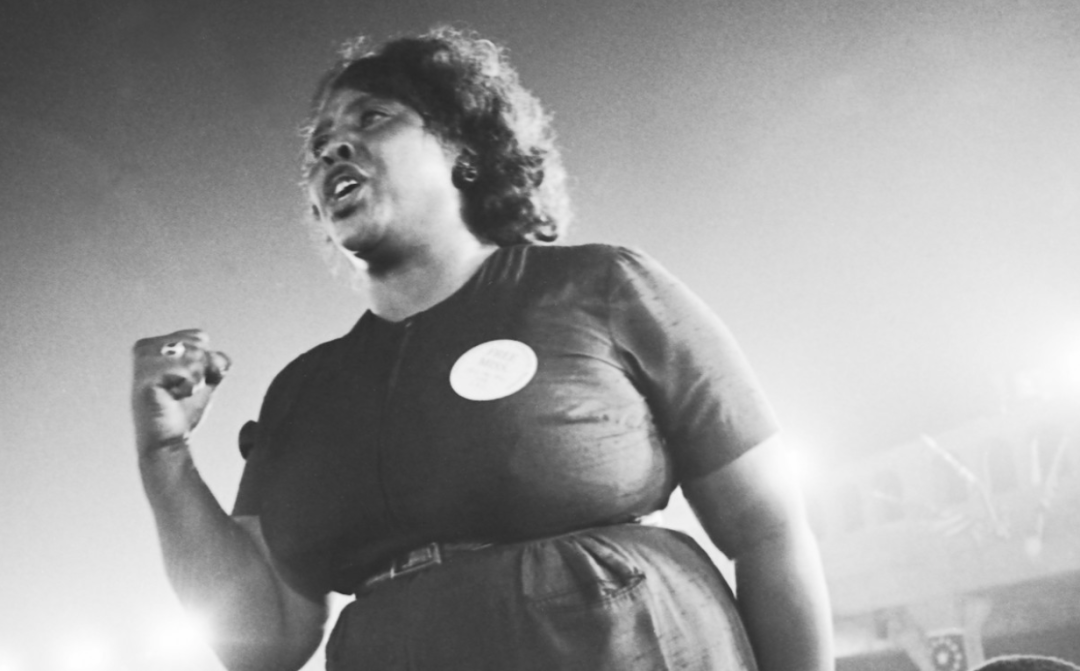by
_____
[This piece originally appeared on April 7, 2020 on Evoke.org — an online community hosted by Melinda Gates]
I’m a longtime speech coach, and in the past few years, I’ve made a discovery: most collections of the greatest speeches in history include very few by women. Whenever women’s speeches are in the mix, they’re almost always heavily outnumbered by speeches by men. What’s more, they’re usually the same handful of speeches by women, over and over.
From looking at the books, you’d think women have been mostly silent in history. I wondered: Could it be true? Could so few women have spoken up?
Now I certainly recognize that women have not had opportunities like their male counterparts to serve as statesmen, military leaders, legislators, and civic and institutional leaders. That much we know.
But have those barriers kept women from speaking in public?
The answer is no. Women have spoken up—but their words haven’t been recorded and preserved the way men’s have. Their words and ideas have not been valued the same—and therefore their words have been forgotten.
We struggle generation after generation to develop new arguments and articulate new ideas, not knowing that women before us have explored similar problems and thought similar thoughts.
That’s why I started collecting women’s speeches on a website I call the Speaking While Female Speech Bank. As of this writing, this archive includes more than 1,800 speeches by women, both historical and contemporary, representing diverse topics and perspectives, on topics from politics and religion to public policy, labor reform, nature, war and peace, and so much more.
When it comes to understanding women’s history, women’s speeches are an invaluable resource.
When women’s speeches get overlooked, ignored, even erased, we lose the insights and ideas these women labored to create. Without this knowledge, we struggle generation after generation to develop new arguments and articulate new ideas, not knowing that women before us have explored similar problems, thought similar thoughts, and came up with insights, improvements, even remedies.
How can we build on the wisdom of the past if we don’t know the past?
We deserve to know about the women who came before us. What are their stories, their struggles, their achievements? When it comes to understanding women’s history, women’s speeches are an invaluable resource.
This is our inheritance, and it matters.
It’s a powerful chain of connection, a continuum of women’s experience and voice through time.
When we see that Molly Wallace stood up in a New England academy in 1792 to argue for the power of a woman’s voice, and that Meghan Markle made a similar argument in 2018, that’s a powerful chain of connection. It’s a continuum of women’s experience and voice through time.
That knowledge is our secret weapon—one that should no longer be secret.
With that in mind, here are five of my favorite women’s speeches:
____________________________
“Why Slavery is Still Rampant in the Land”
by Sarah Parker Remond — Manchester England, 1859
For the slave there is no home, no love, no hope, no help; and what is life without hope? No writer can describe the slaves’ life; it cannot be told; the fullest description ever given to the world does but skim over the surface of this subject.
____________________________
by Anna Doyle Wheeler — London England, 1829
And while I feel the difficulty of employing a moderate language, in speaking of the degraded position of my sex, I am on the other hand but too well aware, that the remarks I am about to make, will draw upon me the hate of most men, together with that of the greater portion of the very sex, whose rights (at the present state of my existence), I attempt to advocate…”
____________________________
“The Need of Women in Science”
by Maria Mitchell, Philadelphia, 1876
For the very reason that a woman’s methods are different from those of a man, are women needed in scientific work. All her nice perceptions of minute details, all her delicate observation of color, of form, of shape, of change, and her capability of patient routine would be of immense value in the collection of scientific facts.
____________________________
by Toshiko Kishida, Ōtsu Japan, 1883
…The expression ‘daughters in boxes’ is a popular one, heard with frequency in the regions of Kyoto and Osaka. It is the daughters of middle-class families and above who are often referred to as such. Why such an expression? Because these girls are like creatures kept in a box. They may have hands and feet and a voice — but all to no avail, because their freedom is restricted. Unable to move, their hands and feet are useless. Unable to speak, their voice has no purpose.
____________________________
“We Have the Vote, Now We Can Begin”
by Crystal Eastman, New York, 1920
What is the problem of women’s freedom? It seems to me to be this: how to arrange the world so that women can be human beings, with a chance to exercise their infinitely varied gifts in infinitely varied ways, instead of being destined by the accident of their sex to one field of activity — housework and child-raising.
I hope you’ll explore these and other speeches in the Speaking While Female Speech Bank. We’re all better off when we know our history—and can look for inspiration to the outspoken women who’ve led the way.
(Photo: Fannie Lou Hamer [Methodist Church Global Ministries/Kenneth Thompson])
© Copyright 2020
________________________________
Want to talk? Reach me at dana@danarubin.com






